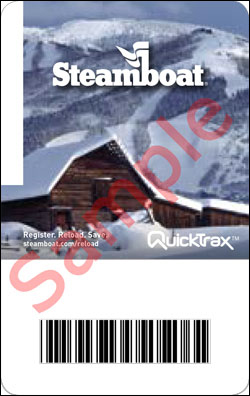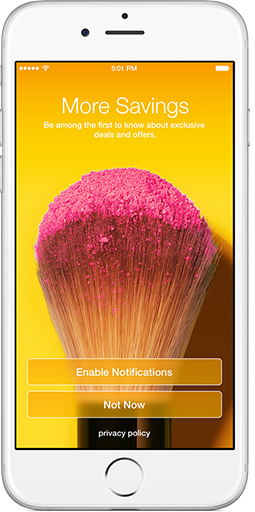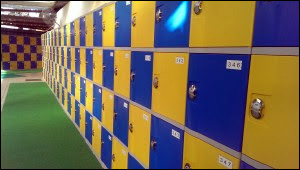Aug 06, 2015The following are news announcements made during the past week by the following organizations:
Checkpoint Systems;
U.S. Navy;
Intrawest Resorts Holdings, EM Microelectronic, Skidata;
Target;
Aqua Village; and
ABI Research.
Checkpoint Systems Reports Momentum Building for RFID
In its most recent earnings report, Checkpoint Systems announced that its RFID label revenues grew by more than 20 percent year-over-year. George Babich, the company's president and CEO, said that his firm expects to achieve an increase of about 50 percent in its RFID project pipeline in the coming year, adding that "retailers are beginning to review RFID as table stakes to compete in the 21st century omni-channel retail reality."
Checkpoint is a global provider of in-store merchandise-availability solutions for the retail industry, encompassing loss prevention and merchandise visibility. The company provides end-to-end solutions enabling retailers to achieve accurate real-time inventory visibility, accelerate the replenishment cycle, prevent out-of-stocks and reduce theft, thus improving merchandise availability and the shopping experience.
According to Babich, Checkpoint has struck a deal with one of its largest North American customers to upgrade existing Checkpoint RF electronic article surveillance (EAS) antennas with Checkpoint Systems' next-generation dual RF/RFID-ready antennas. The initiative will get underway in the second half of 2015, as part of the customer's plans to use RFID tags both for EAS loss prevention and inventory visibility.
Babich also announced that one of Checkpoint's largest European customers will begin to deploy its RFID-based Merchandise Visibility solution at approximately 150 stores and distribution centers in France.
"Our OAT software has been expanded to include the functionality for distribution centers, where we also will be installing our world-class mass RFID tag reading solutions," Babich said. "Stores will be equipped with our high-performance RFID POS solution, with our OAT software suite running on handheld readers. This represents the next step forward with this retailer, who we expect to deploy worldwide our end-to-end merchandise visibility solutions, beginning in the DCs into the back of the store stock rooms, and finally into the store. With the momentum building and the pull being generated by retailers, we hope to announce a number of RFID, and RFID inspired projects in the future."
In the future, Babich added, Checkpoint expects to announce a number of RFID projects. "We are now in discussion, proof-of-concept, pilot, or partial deployment phases of our Merchandise Visibility solutions in more than 30 retailers across the globe. Checkpoint is the thought leader for these retailers as they explore the myriad of benefits RFID technology has to offer in their stores and distribution centers, and we are confident that we will convert many of these projects to full deployments in the years to come," Babich said.
Responding to a question from an equity research analyst regarding retailers' adoption of Checkpoint's Wirama RFID technology, Babich stated: "With our installation of RFID in Decathlon, in France, we utilized our Wirama technology in the antennas. And as I mentioned, with the North American retailer, we are not disclosing it at this point, we are changing out all of their antennas chain-wide so that they are in a position to utilize the RFID technology—Wirama technology—at the point of exit as they expand their RFID program with us."
U.S. Navy Demos RFID Inventory Application Offshore
Sailors aboard the USS Independence successfully demonstrated a passive RFID system's utility during a test of a mine countermeasures mission package (MCM MP) container, conducted off the coast of Florida in early July. The demonstration is part of an RFID-based cargo-tracking solution developed by the Panama City Division (PCD) of the Naval Surface Warfare Center (NSWC). The solution is designed to eliminate the need to perform manual inventory checks on vessels like the Independence, which is a littoral combat ship (LCS), a small surface vessel intended for operations close to shore.
The RFID project, which uses ultrahigh-frequency (UHF) RFID tags affixed to tools stored in metal cabinets within containers, showed the technology's ability to dramatically reduce the amount of time that sailors spend conducting parts and equipment inventory counts in support of ship replenishment. During the container testing, Sailors scanned and inventoried 1,300 pieces of equipment within only 21 minutes, during a rapid replenishment evolution between at-sea periods. Previously, according to the NSWC PCD, this task would have required three sailors 72 hours to accomplish. The project goes back as far as 2012 (see Naval Surface Warfare Center Demos RFID Tool-Tracking Solution for Combat Ships).
"RFID reduced the time the sailors are in the containers in the ship, and that's a goal—to reduce the warfighter's workload," said Bill Israelson, an NSWC PCD project engineer, in a prepared statement. "With the system's proven accuracy, we can quickly tell what needs to be resupplied so the ship can get what it needs and head back to sea."
The inventory occurred once the sailors returned to port from after conducting at-sea technical evaluations. Once in port, engineers from NSWC PCD, NSWC Port Hueneme Division and contractor support scanned parts and equipment inside the mission package, the NSWC PCD explained. They then forwarded that information to a computer to determine what needed replenishment.
The RFID project is nearing the final test and evaluation stage, which is necessary to validate the proof-of-concept. The RFID prototype was initially developed by the Office of Naval Research.
Steamboat, Winter Park Resorts Installing RFID Technology
Intrawest Resorts Holdings, a North American mountain resort and adventure company, has announced that RFID technology will be launched at its Steamboat and Winter Park resorts for the upcoming 2015/16 winter season. The solution will employ EM Microelectronic's EM4233 passive RFID chip, which contains 1625 bits of user memory and complies with the ISO 15693 standard, as well as an RFID ticketing and access-management system provided by Skidata.
According to Intrawest, all daily lift tickets, season passes and frequency products will be available on QuickTrax cards, which are embedded with the EM4233 IC to enable hands-free access to lifts. When a guest passes through the RFID gate, it will open automatically after registering that person's QuickTrax card. As in previous seasons, the company reports, lift operators will be on hand to assist with the access gates and ensure a smooth and efficient guest experience.
"Always looking to enhance the guest experience, we're excited to roll out RFID technology at Steamboat and Winter Park this season," said Sky Foulkes, Intrawest's COO, in a prepared statement. "Industry-leading guest service is at the core of our resorts, and the RFID technology will improve the guest experience and enhance our operating efficiency."
Steamboat will install RFID readers at its gondola, Christie Peak Express, Preview and Thunderhead Express chairlifts. Installation at Winter Park includes the Zephyr Express, Arrow, Gemini Express, Challenger and Super Gauge Express chairlifts.
The new QuickTrax card will be reusable throughout multiple seasons and can be reloaded online or via smartphone, allowing guests to bypass the ticket office. All guests will also have the option to sign up for Resort Charge, Intrawest notes, thereby eliminating the need to carry cash or a credit card on the mountain. Resort Charge allows guests to make purchases at any resort-operated restaurant, rental and retail location, and ski and ride school, by linking a credit card account to their QuickTrax card.
With the implementation of the RFID system, the resorts will issue and mail new RFID-enabled season-pass and frequency products at no cost, starting in early October.
Target Tests Beacons at 50 Stores
Big box retailer Target has announced that it is now testing Bluetooth beacon technology at 50 of its stores across the United States. The beacons will work with the retailer's Target iPhone app (version 7.4 or higher) to deliver timely deals and recommendations on nearby products and more, according to the retailer.
To take advantage of the beacon technology, the retailer explains, shoppers will need to download the latest version of the Target iPhone app and enable Bluetooth in the phone's settings. When visiting one of the 50 test stores—located in Chicago, Denver, Minneapolis, New York City, Pittsburgh, Portland, San Francisco and Seattle—a customer will be prompted to opt in to share location data and receive push notifications.
In an announcement posted on its corporate website, Target reports that it will limit the number of pop-ups that customers receive via the app to two per shopping trip, and that it will make sure the alerts and in-app updates provide compelling content and offers.
"We're excited to start using beacon technology to offer real-time, relevant content and services that can help make shopping at Target easier and more fun," said Jason Goldberger, the president of Target.com and Mobile, in the announcement. "This is another way Target is bridging mobile and stores, and using digital to enhance the in-store shopping experience. We look forward to seeing how our guests respond to what we've built."
In addition, the retailer said it is already working to develop additional features for future release, including the ability to dynamically re-sort a shopping list as a customer moves through the store, similar to how a smartphone map reroutes when a user veers off-course. Target also plans to launch a service in its app that allows a customer to request a store team member's assistance directly from the phone.
Based on the results and guest feedback that Target receives from the 50-store test, the retailer reports that it will continue to enhance and adapt the service, including adding support for Android devices. The company also plans to expand the service to more stores later this year.
Indian Water Park Implements RFID-Enabled Solution
Aqua Village, a water and amusement park located in Pinjore, India, has implemented Semnox Solutions' RFID-enabled park-management solution, according to Semnox. Aqua Village, which is spread across four acres of land and faces the foothills of the Himalayas, has installed more than 600 RFID-based lockers.
The solution employs 13.56 MHz RFID wristbands and readers compliant with the ISO 14443 A standard, and also includes an electronic entry ticketing system. In addition, the company says, the RFID technology is integrated with Semnox's Parafait Cashless Solution so that a single RFID wristband can be used for all operations at the park.
At the Aqua Village entrance, guests are issued the RFID-based silicon wristbands, which they can then use to rent and access the lockers, purchase food and beverages at the park's restaurant, purchase souvenirs and more. The solution was implemented in June, according to Manuel Praveen, Semnox's client manager.
Bluetooth Beacon Shipments to Exceed 400 Million Units in 2020
Worldwide shipments of Blue beacons—which use Bluetooth Low Energy (BLE), or Smart Bluetooth, technology—are expected to exceed 400 million units in 2020, according to a new report from ABI Research.
The report, titled "BLE Tags and the Location of Things," also reveals that by 2020, pure beacon shipment revenues are expected to break $1 billion. "That is our current projection," says Patrick Connolly, ABI Research's principal analyst, "but if we include related revenues like analytics, maintenance and advertising, this number is expected to reach $10 billion-plus."
"In 2015, we are seeing the first stages of adoption across a huge range of markets. Retail will always take the headlines, but there are also strong shipments now in asset tracking, smart city/tourism, hospitals, airports and personal smartphone applications," Connolly states. "We are also seeing the first forays into connected home and the broader IoT market, which has huge potential. There is also a huge, long tail of developers and niche-market use cases that collectively represent a sizeable market."
The quantity of beacons that will ship in 2015 is expected to reach the millions, Connolly reports, adding that some individual vendors may even break the 1 million mark this year. Revenues remain low at present, he adds, as they are largely based on current hardware. But OEMs are now moving to service models, Connolly says, and that is where the real long-term revenue lies.
The report identifies three interesting verticals: asset tracking, vending machines and dedicated beacon advertising networks, where OEMs like Gimbal, Sensoro, Kontakt.io and Bluvision are having initial success. According to the research firm, the significant advances around network management, meshing, technology hybridization and software-based beacon upgrades are creating confidence for huge shipments for previously unexpected purposes, such as asset tracking and industrial applications.




